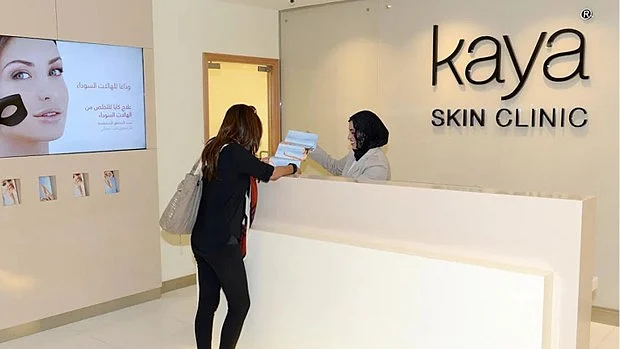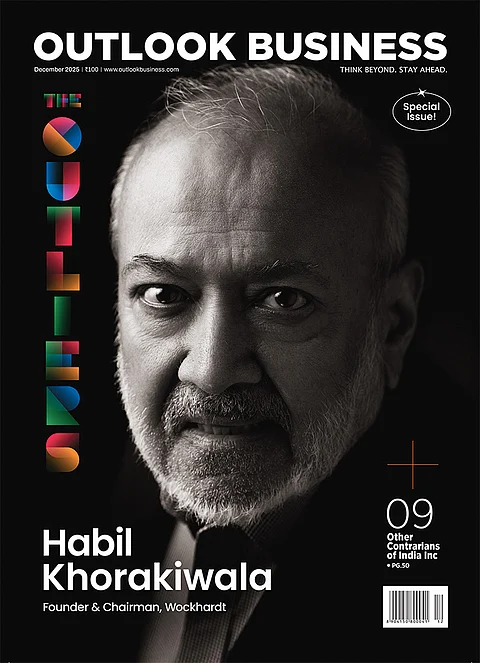When Kaya Clinic burst onto the stage in 2003, the stage was set for a Cinderella story. India had clinched one Miss Universe and four Miss World titles in the previous decade, the economy was booming, and Harsh Mariwala, Chairman of Marico, was in its corner.
This Mumbai-based venture had a grand vision – to offer a sweeping array of dermatological and beauty solutions, including facials, hair removal, and skincare products. As time rolled on, they even ventured into wellness services, aligning themselves with the growing demand for holistic beauty and wellness experiences.
Kaya was a pioneer, a trailblazer in specialised skincare and haircare. Their footprint spanned India and the Middle East, where they operated an impressive network of 94 clinics across 27 Indian cities and 23 clinics in the Middle East. With a team of over 100 dermatologists, they were poised for greatness, or so it seemed.
Since being listed on the bourses in 2015, it has posted losses in every fiscal except one. The company's stock has taken a beating, with a heart-wrenching decline of 49 per cent in the past five years and a gut- wrenching plummet of over 75 per cent since its listing in August 2015. As of October 18, Kaya's shares were trading at Rs 361.15 per share on the NSE.
Amongst the other crown jewels of Mariwala, known for taking risks, Kaya stands out as an outlier. How the story unfolded is not what the veteran would have hoped for when the brand burst onto the scene.

Establishing An Identity
Entry of a major player like Marico in the niche skincare segment had intrigued industry watchers. For an FMCG player, a leap into skin care services was always going be a challenging task. In a case study published by IIM Bengaluru, authors Ramesh Kumar, Ande Teja, Syed Hussain noted, “The beauty care industry involved many products like hair, shampoos, oil, cosmetics and fragrances, whereas the skin care segment was smaller than the personal care segment. So, targeting the small segment was a very big challenge for the organization.”
The company was optimistic about the prospects. It had said at the time, “Marico would seek to create a differentiation as a corporate service provider offering safe, efficacious and credible Skin Care Services range at multiple locations backed by medical procedures and technology.”
It invested significantly in expanding the network of clinics across the country. The idea, as per the company’s statements, was to take on the largely unorganised singular clinics spread across the country. In the 2000s, the company did see a significant expansion of its network and revenue. By 2010, its revenue from operations had reached Rs182 crore. However, the company failed to register profits.
While questions over its performance were being raised, the company continued to exude confidence. It noted in 2009, “[Kaya] has focused on building the brand through setting up of a large number of Clinics at several locations. In the process, Kaya has incurred significant set up costs including advertisement and sales promotion.” The company later accepted in its 2010 annual report that it has taken longer than expected to achieve profitability.
As per Kaya’s understanding, the performance could largely be attributed to declining customer retention and high attrition of its professionals. The IIM case study noted, “The challenge for Kaya was realising the insights through differentiating the first-time customers and the loyal customers of the Kaya beauty parlours.”
It was around this time the company thought of a new strategy. Instead of just focusing on the cure segment, it started positioning itself as “cure and care” brand. To focus on the products segment, it acquired Derma Rx to enter the markets of Singapore and Malaysia and sell its products in India. In a short while, 23 per cent of the revenue started to pour in from the sales of products.
And yet, profitability remained elusive. It is then the Marico group decided to pull a new trick from its sleeve.
Kaya’s New Life
In 2013, Marico announced a major change to the structure of its business. It decided to demerge the skincare brand Kaya and separate its FMCG business. Milind Sarwate, then-Group CFO, Marico, told The Hindu Businessline, “It has been a decade and Kaya did look at expanding operations, but it did not meet our expectations. We would be partitioning the balance sheet of the two companies within the group and there will be no crossholding between them.”
The new entity, Marico Kaya Enterprises, came into being. As per an ex-employee of the brand cited by the report, the business was not being run with a retail mindset, which was clouding its strategy. Soon after the demerger, things started to look good for Kaya, it reported total revenue of Rs 290.27 crore, a substantial leap from Rs 143.33 crore in the preceding fiscal. The company even managed to pull off a profit after tax (PAT) of Rs 37.39 crore that year, a dramatic turnaround from a net loss of Rs 15.83 crore in FY13. The company turned profits after a sustained focus on rationalisation of costs. Kaya India's then-CEO S Subramanian told Business Standard that the closed over 50 property deals coming up for renewals in 2014 where it managed to hold costs.
Harish Bijoor, business and brand strategy guru, says that cost cutting and giving up on weak or non-profitable stores helped the company gain profitability.
He adds, "After being in a business for more than 10 years, firms re-invent their businesses. As a result, they may not earn width of availability but ensure profitability."
Hope suddenly was on the horizon. For a while, the company was also running on “care, then cure” model which Mariwala admitted in an interview to Business Standard. He said that the company will reverse its focus on the cure, then care model.
"Kaya wasn't doing well, and in frustration, I decided to change the positioning," he revealed. “We thought that by going to the care mode, we will get a lot more customers and they in turn will go into the cure mode. A lot of our advertising went towards pushing our skin care positioning and cure suffered. Even the doctors in the clinic were not feeling belonged," Mariwala admitted in an interview with Business Today.
The re-birth of Kaya, after a decade of disappointment, was another chance for the skincare brand to fulfil its promise. While it started on a positive note, the plot thickened suddenly but not in its favour.
Kaya Stumbles
In FY15, Kaya’s total income decreased to Rs 347.72 crore and PAT declined to Rs 31.78 crore. In FY16, the company reported total income of Rs 382.33 crore and 72 per cent YoY decline in profit to Rs 8.86 crore.
Kaya's gross sales dwindled by 8.15 per cent, plunging from Rs 409.07 crore in FY17 to Rs 376.73 crore in FY23. The company's bottom line told a similarly woeful tale, with a net loss ballooning from Rs 27.26 crore in FY17 to a staggering Rs 116.26 crore in FY23.

Bijoor weighs in on Kaya's missteps. The company's Achilles heel: consistency. "The services industry is complex since products are made in factories, but services are provided on-site. This became Kaya’s key challenge. The company encountered different problems in different places, raising questions about their service consistency," Bijoor observes.
The battleground wasn't any less treacherous due to the fierce competition. Kaya faced off against over 200 different brands in major Indian cities, creating a veritable battlefield. The competition spanned boutique specialty brands, specialist skincare clinics, and individual skincare specialist doctors, transforming the skincare market into a labyrinth Kaya struggled to navigate.
Amidst its faltering business, the company also increased its debt substantially. It bloated its debt from Rs 30.01 crore in FY17 to a staggering Rs 142.09 crore in FY23. Ashish Rane, Director of Valuations and Financial Advisory at Aranca, says, “Kaya’s rapid expansion strategy might have stretched resources and management capabilities, impacting their official efficiency. Declining revenue, shrinking profit margins, and a massive debt balance made the problems worse for the company.”
In a 2017 interview to Forbes, Mariwala admitted that there were leadership and executive issues at the company. However, he was still optimistic about turning around the business. “We have to improve customer service, offer something that investors want, invest more in technology and sell more products. I have confidence that it will turn around, but we have to do it in the next one or two years,” he adds.
Six years have passed since the interview and yet the business is not recording profits on a consistent basis. But it does not appear in the mood to give up soon.

Quest To Redeem Itself
During the Q4FY23 earnings call, CEO Rajiv Nair said that post-COVID, the company is trying to refurbish its clinics and improve the infrastructure. The company is investing in technology, including machines and a complete upgrade of old technology in the clinics. This will largely impact categories like fairness pigmentation, laser hair removal, and a few innovations in the coming years. Additionally, they are looking to expand into Tier 2 and Tier 3 cities.
He added that Kaya aims to improve productivity within the clinics and increase the count of customers inside the clinics. In the product vertical, the company will continue to invest and add more segments like neutraceuticals.
Whether these efforts work in getting the company back on the profitability track is what investors are keeping an eye on.
Despite Kaya's trials and tribulations, the future of India's beauty and skincare industry still gleams with promise. Valued at $16.8 billion, the beauty and personal care market is forecasted to grow at an 11 per cent CAGR, according to a report by Estée Lauder Co and 1Lattice.
However, skepticism surrounds skincare and wellness brands, as seen in VLCC's repeated failures to list on the stock market despite multiple attempts. The company had filed a draft red herring prospectus (DRHP) for an IPO in 2015, 2017 and 2021 but cancelled the plans each time.
In a highly competitive market, replete with new entrants and ever-evolving product offerings, companies in this industry face monumental challenges.
Survival and success hinge on a company's ability to adapt to the ever-shifting tides of business dynamics. Kaya's recent financial woes may have cast a shadow, but by delivering innovative customer experiences and navigating the competitive terrain skillfully, the company holds the key to redemption.
"Cutting down on non-productive expenditure and focusing on strengthening the core product line and distribution network shall hold any company in this industry in good stead," says Amar Singh Deo, Head Advisory at Angel One Ltd.
Kaya remains an incomplete page in the otherwise successful story of Harsh Mariwala’s journey. From promising beginnings to financial turbulence, the brand’s narrative is one of twists and turns. But in the ever-evolving world of beauty and wellness, the future remains unwritten. By embracing change, offering innovative solutions, and outmaneuvering the competition, can Kaya rewrite its story and find its place in the sun?
































